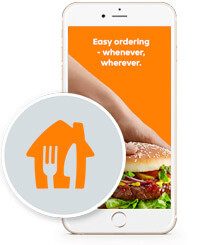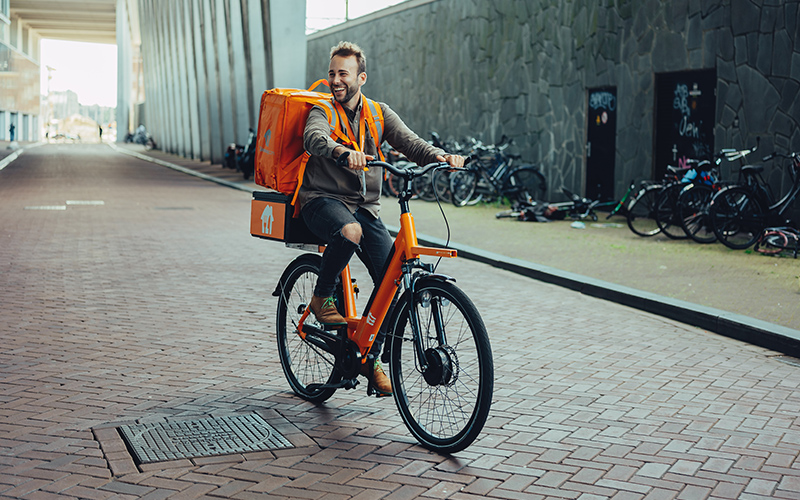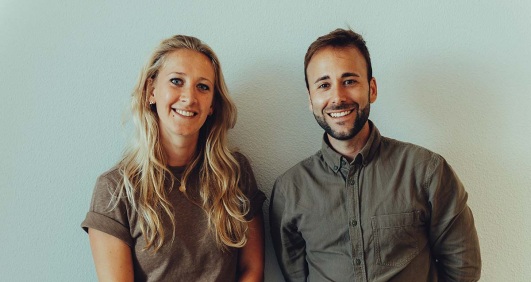Q&A with Victor
This Q&A reflects Victor's time as Senior Performance Display Specialist at Just Eat Takeaway.com. Currently, Victor is GLOBAL App Growth and Retention Team Lead at eDreams ODIGEO.
Victor Hernandez is a Senior Performance Display Specialist at Just Eat Takeaway.com, a leading online food delivery app connecting users and restaurants. After generating millions of installs at shopping and travel apps over the last 8+ years, he has extensive knowledge in attribution, fraud prevention, and deep linking. Victor is currently managing the user acquisition growth and engagement activities at Just Eat Takeaway.com.
Read Victor's latest article: "A Perfect Match. How to Run UA and Engagement Together."
In your own words, tell us about the app(s) that you manage?
The Just Eat Takeaway.com apps provide a food delivery marketplace to order food from thousands of restaurants. We help connect users and restaurants through our platform in 24 countries. We run a single-brand identity in each country we operate in, which allows us to concentrate all marketing efforts and offer broader restaurant and cuisine selections to consumers.
How did you get started in mobile marketing?
I have 8+ years of mobile marketing experience, mainly focusing on user acquisition and performance marketing. I was lucky to be part of the transition as digital companies began shifting towards mobile platforms and mobile ad ecosystems. At the time, mobile apps were soaring in usage and popularity—a perfect time to switch.
What do you like most about mobile marketing?
The mobile marketing world is still in development and continuously changes year over year. I like being able to adapt to changes, opportunities, and challenges. The industry isn’t stagnant, which motivates me to learn and improve on old and new techniques.
What does it take to succeed in mobile marketing?
To avoid weak assumptions or wrong deductions, app marketers must be data-oriented and inquisitive when evaluating data. It also helps to keep up with the latest industry changes and trends. Being aware of new changes will help you mitigate and prepare for positive or negative shifts in the industry.
What strategies work best to convert installs into engaged app users?
One strategy doesn’t work for everyone. There is no single approach to apply in every market, app, or business model. Recognize that each app is different, and every user behaves differently in separate geos. The best plan to convert installs into engaged app users is to understand how, why, and when users interact with your app. Naturally, this helps you dive deeper into how your app fulfills a need or benefits the user.
In the past year, what is one tip you can share which made the biggest performance difference for your UA strategy?
Never give up. When you hit an obstacle, there is always a workaround to improve user acquisition performance.
For example, it might take a while until you reach significant results with creative testing. Keep a close eye on the metrics to find small opportunities, scale, and improve. If you randomly encounter good performance or favorable conversion rates, dig into what combinations of events occurred that led to your success.
What advice can you offer marketers to successfully re-engage mobile app users?
Each user is different—how they interact, think, and interpret differently depending on location, moment, and needs. Instead of looking at all users simultaneously, concentrate your efforts on dissecting and re-engaging one segment. Guide your ‘who’ by asking, “What are the business needs?” Prioritize the audience that helps you meet the company’s goals.
What’s your top tip when it comes to mobile ad creative?
In the past, I’ve seen great success by adapting each creative to the type of users we want to reach. Our creative team tailors creatives for our User Acquisition campaigns, keeping in mind users who don’t know us or aren’t “convinced” yet to install our app, and another one for Engagement activities where we are going to engage/interact with users that already know our app.
What advice can you offer to help marketers combat mobile ad fraud?
Always be critical of the data you see. If it’s too good to be true, there is a high chance fraud is causing the generous result.
It’s also helpful to have a good understanding of fraud prevention methods. Most of the MMPs have controls in place to identify mobile ad fraud, and most of the DSPs also receive this fraud data.
Another tip is to brush up on the different types of fraud in the user lifecycle. A good understanding of the most common reasons causing these rejections will help you swiftly spot mobile ad fraud.
What are your top 3 go-to resources for keeping up with the mobile ad tech industry?
- Blogs from networks and MMPs keep me updated on the latest innovations and trends.
- Tech podcasts. Nowadays, we can find a podcast for everything and mobile marketing (Mobile Heroes Uncensored).
- News sites and communities (Mobile Heroes Slack Community, Mobile Marketing Magazine).





















